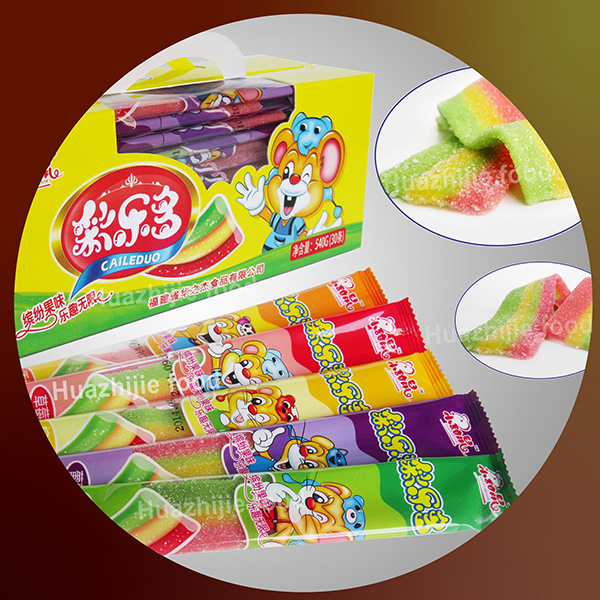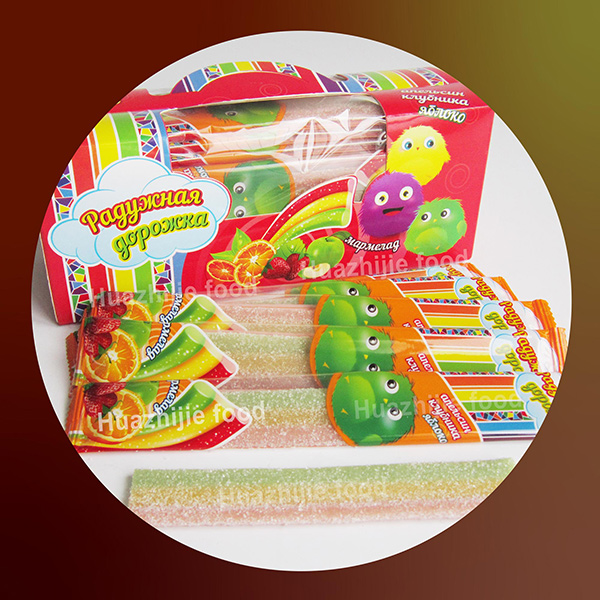Whether you like it or not, most sour candies are incredibly popular due to their pucker-inducing flavor, especially the sour gummy belt candy. Many candy enthusiasts, both young and old, come from far and wide to enjoy the exquisite sting of extremely sour flavors. There's no denying that this traditional candy type is plenty of diversity, whether you prefer the subdued bitterness of lemon drops or desire to go nuclear with the most intense sour candies.
What exactly gives sour candy its sour flavor, and how is it made? For the complete how-to on making sour candy, scroll down!




The Most Common Types of Sour Candy
There is a universe of sour candy out there waiting to saturate your taste receptors with mouth-watering flavor, whilst some of us may think of hard candies intended to be sucked on and relished.
The most popular varieties of sour candy nevertheless fall into one of three broad categories:
-Sour gummy candy
-Sour hard candy
-Sour jellies
How is Sour Candy Made?
The majority of sour candies are created by heating and cooling fruit-based combinations to exact temperatures and times. The molecular structure of the fruit and sugars is affected by these heating and chilling processes, resulting in the desired hardness or softness. Naturally, gelatin is frequently used in gummies and jellies, along with sour sugar, to give them their distinctive chewy texture.
So how about the sour taste?
Many types of sour candy include naturally sour ingredients in the candy's main body. Others are mostly sweet but are dusted with acid-infused granulated sugar, also known as "sour sugar" or "sour acid," to give them a tart flavor.
However, the key to all sour candy is one or a combination of specific organic acids that increase the tartness. More on that later!
What Is the Source of the Sour Flavor?
Now that we've answered the question "how is sour candy made," find out what it's made of. While most sour candies are based on naturally tart fruit flavors, such as lemon, lime, raspberry, strawberry, or green apple, the super sour flavor we know and love is derived from a few organic acids. Each has a distinct flavor profile and tartness level.
Continue reading to learn more about each of these sour acids.
Citric Acid
Citric acid is one of the most common ingredients in sour candy. As the name suggests, this sour acid is found naturally in citrus fruits such as lemons and grapefruits, as well as in smaller amounts in berries and some vegetables.
Citric acid is an antioxidant that is necessary for energy production and even kidney stone prevention. It also produces the tartness that makes sour candy so delicious!
Malic Acid
The extreme flavor of candies like Warheads is due to this organic, super sour acid. It's found in Granny Smith apples, apricots, cherries, and tomatoes, as well as in humans.
Fumaric Acid
Apples, beans, carrots, and tomatoes contain trace amounts of fumaric acid. Because of its low dissolvability, this acid is said to be the strongest and most sour-tasting. Please, yes!
Acid Tartaric
Tartaric acid, which is more astringent than the other sour organic acids, is also used to make cream of tartar and baking powder. It's found in grapes and wine, as well as bananas and tamarinds.
Other Common Ingredients in Most Sour Candy
-Sugar
-Fruit
-Corn syrup
-Gelatin
-Palm oil
Sour belt gummy candy is delicious
Can't get enough of that tangy candy? That's why, every month, we create a delectable sour gummy candy for our candy-obsessed subscribers to enjoy. Check out our most recent Mostly Sour candy item and place an order for a friend, loved one, or yourself today!
Post time: Feb-15-2023





